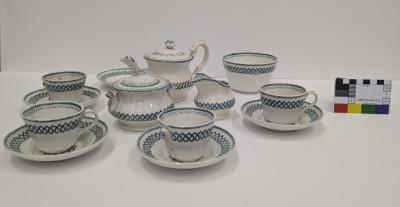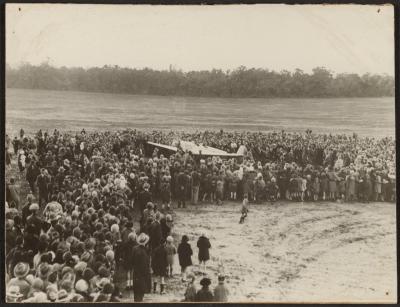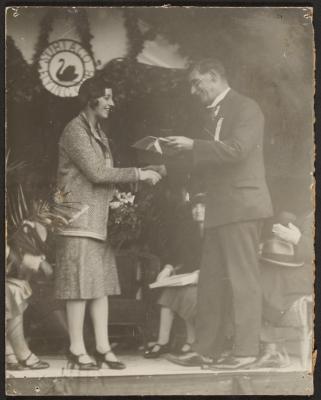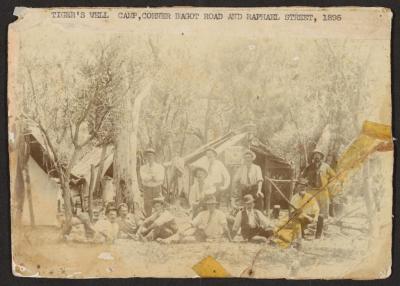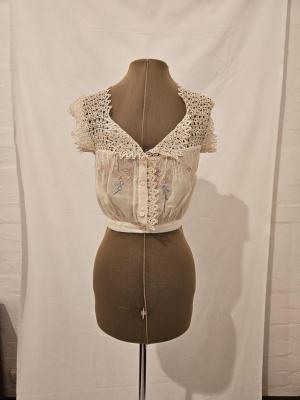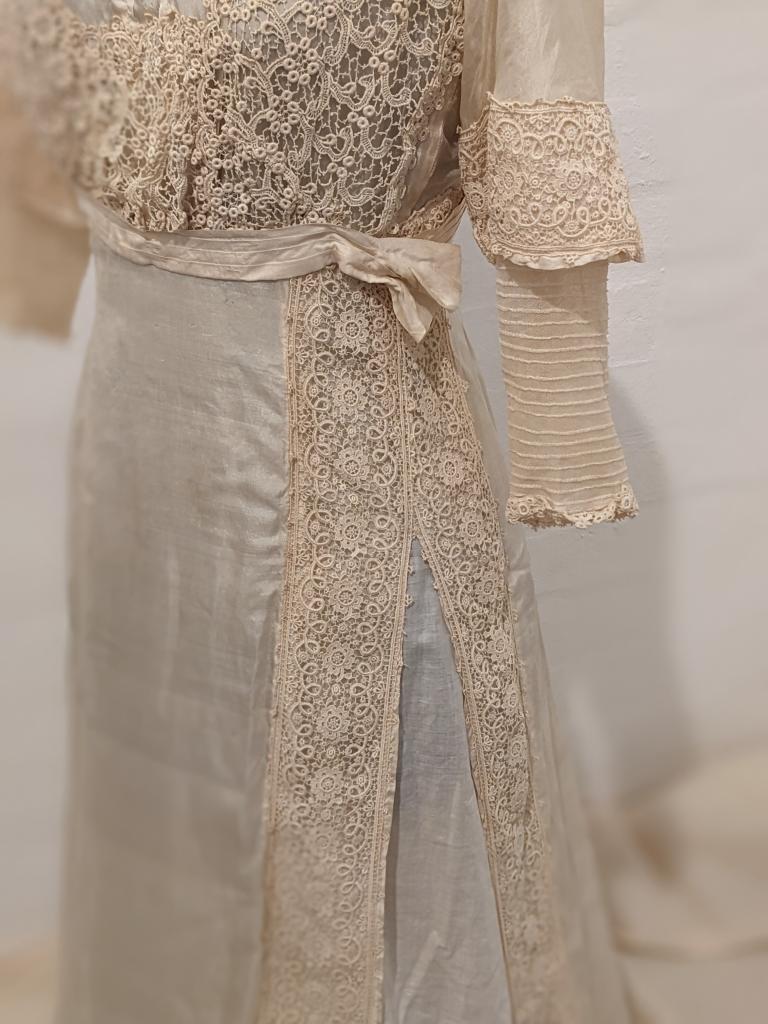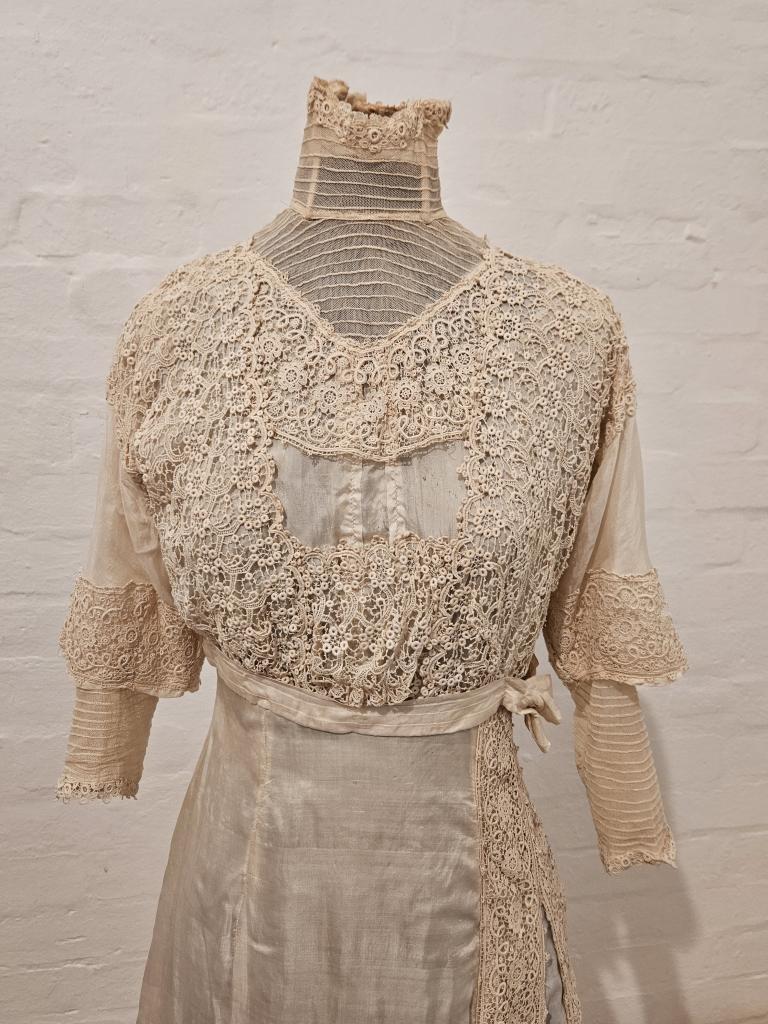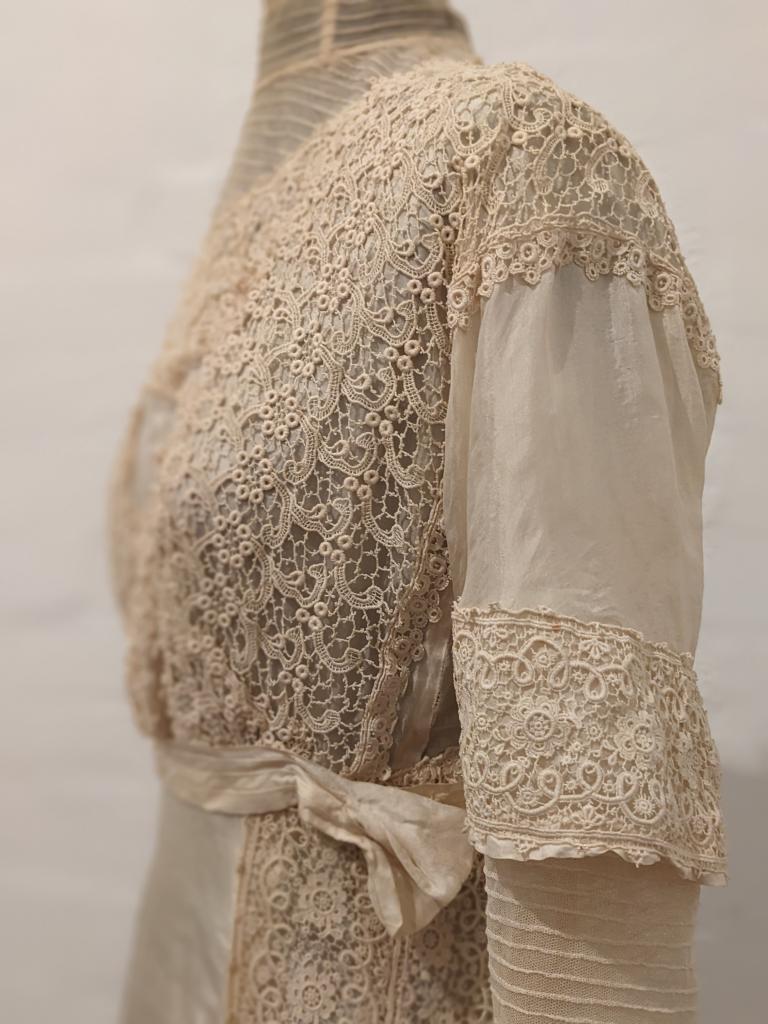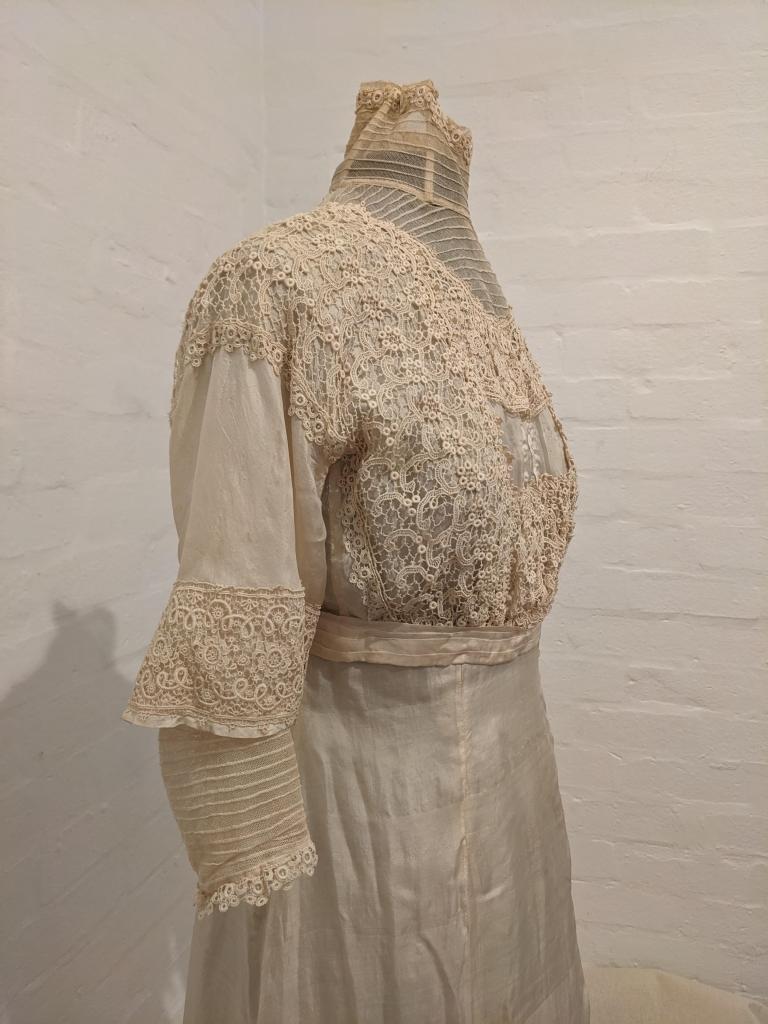DRESS: CREAM, SILK, LACE AND NET, HIGH NECK, FULL SLEEVE AND LENGTH
c. 1910High boned collar of tucked net, lace trimmed. Silk bodice overlaid with lace, lace and silk oversleeve, with tucked net undersleeve attached to petticoat. Side split, silk overskirt, lace bordered with silk lower underskirt attached to cotton petticoat. 3/4 sleeve with short lace undersleeve. Dress has a silk tuckpleated belt. Boned standing collar trimmed with machine made needlepoint lace and hand made bobbin lace. Very well made dress but hand made edge to collar has been tacked on. Neck, base, waist to hip fastening with brass hooks and silk button hole stitch for 'eyes'.
Judy Mitchell, the curator who accessioned this dress, recalls that Bagley (the donor was Mrs Bagley) was a local family name, but she cannot give details of a Subiaco provenance for the dress. E. Hof 2009.
Similar garments were worn during the Edwardian period and referred to as a day dress or a summer dress. It may well have been a wedding gown that became the ‘Sunday best’ post ceremony.
Donor maintains item was manufactured by her (ergo, a Mrs Bagley) in 1895. Style however suggests a later date of manufacture circa 1910.
Judy Mitchell, the curator who accessioned this dress, recalls that Bagley (the donor was Mrs Bagley) was a local family name, but she cannot give details of a Subiaco provenance for the dress.
This style of dress is like the lawn dresses/whites or day dresses that were common in the 1900-1910s. They were made of lightweight fabric and often used in summer and early afternoon events.
This style would be likely worn with a wide brimmed hat.
We have photos of women in similar attire with parasols and hats.
Dress has a fairly large piece of fabric added on the lower part of the skirt (which is common) and a wide hem to add weight to the base of the dress. The overlay ‘apron’ diminishes the visibility of the addition and allows the dress to ‘flow’ to the ground. Trains are starting to fall out of favour at this time as they spread dust and dirt and women were starting to look for more practical day wear.
The very delicate pin-tucking to the high neckline and yoke would accentuate a slender neck, accentuate the tiny 29” waist. And continuity of design is achieved by pin-tucking on the lower part of the sleeves.
High necks were still popular in daywear at this time but by about 1909/10 the boning of the collar started to lose popularity.
Details
Details
Social. Dress, silk lace and net.
Other items from Subiaco Museum
- KNICKERS: COTTON VOILE
- HEADLIGHT: 'BLACKOUT' DIMMERS
- SEWING MACHINE: 'WERTHEIM' HAND OPERATED
- TOY: PORCELAIN TEA SET, GREEN AND WHITE
- WASHBOWL: EARTHENWARE BLUE AND GREEN GLAZE
- POSTCARD, 'GREETINGS FROM SUBIACO, THE OVAL, SUBIACO, W. A.'
- PHOTOGRAPH: THE CROWD AWAITING AMY JOHNSON, WEST SUBIACO AERODROME, 1930
- PHOTOGRAPH (COPY): THE CROWD AWAITING AMY JOHNSON, WEST SUBIACO AERODROME, 1930
- PHOTOGRAPH: ARRIVAL OF AMY JOHNSON'S PLANE
- PHOTOGRAPH: MR OLNEY, MAYOR OF SUBIACO, WELCOMES MISS JOHNSON
- PHOTOGRAPH: TIGER'S WELL CAMP, CORNER BAGOT ROAD AND RAPHAEL STREET, SUBIACO
- CAMISOLE: EMBROIDERED VOILE



